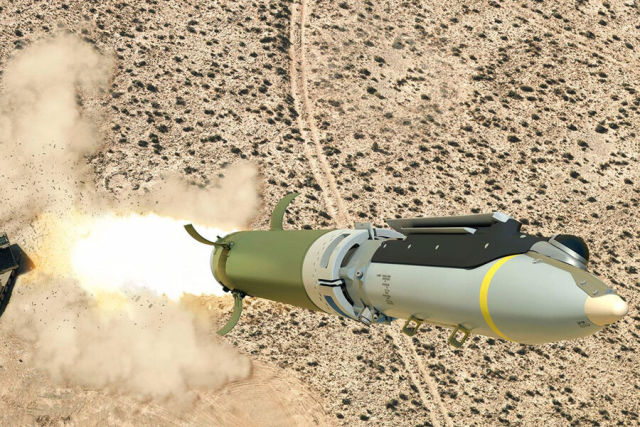Pentagon Announces New Military Aid Package for Ukraine with GLSDB Bombs More than $2 billion of military aid is allocated to Ukraine by the United States as part of a new package, the Pentagon said.
The APU will receive two Hawk air defense systems and high-precision long-range guided missiles GLDSB for HIMARS missile systems. "Newspaper.Ru" studied what kind of military support Kiev will receive from Washington.
The new package of US military assistance to Ukraine amounts to $2.175 billion. This was announced by the official representative of the US Department of Defense Patrick Ryder, reports Reuters.
As part of the assistance package, Kiev will receive two Hawk air defense systems, precision guided missiles and long-range missiles for HIMARS - GLSDB multiple launch rocket systems. In addition, the AFU will send additional 155-mm artillery and 120-mm mortar shells, 190 heavy machine guns, 181 vehicles with mine protection, 250 Javelin anti-tank complexes, two thousand anti-tank missiles and equipment for winter.
The MIM-23 HAWK is a medium-range military anti-aircraft missile system. Designed to hit targets at a range of 1.5 to 35 km and at an altitude of 60-18 thousand meters.
Bloomberg reports that GLSDB missiles can be used to create hybrid weapons with a range of up to 150 km, combining two devices: a 113 kg small-diameter aerial bomb controlled by GPS - GLSDB satellites, and HIMARS launchers already operated by Ukrainian troops.
In fact, it is a hybrid of bombs with missiles.The GLSDB is launched from the M270 and M142 HIMARS ground-based missile systems.
This type of weapon was created as a result of modifying a small-diameter bomb, to which a rocket engine was added. According to the agency, the shells will be purchased by the US Air Force from Boeing.
According to the website of SAAB, which produces GLSDB together with Boeing, these munitions are controlled by GPS, can wade through electronic interference and are used in all weather conditions. Bombs are effective against armored vehicles. The GBU-39, which functions as a GLSDB warhead, has small folding wings that allow it to fly more than 100 km if dropped from an airplane and accurately hit targets with a diameter of 1 meter.
At the same time, according to official statements, the United States is not going to transfer ATACMS missiles with a range of about 300 km to Kiev, which the chairman of the Foreign Affairs Committee of the House of Representatives of Congress, Michael McCaul, proposed to use for strikes on Crimea.
The Pentagon will need about nine months to transfer the shells to Kiev.
The WSJ reported that the United States will announce a new package of military assistance to the Kiev authorities on February 3. It is assumed that it will include Claymore anti-personnel mines, Excalibur shells and auxiliary equipment for Patriot missile defense systems.
The United States has already allocated a total of $27 billion in military assistance to Ukraine, The Wall Street Journal reported on February 1.
So far, it has not led to a "boom among Pentagon contractors" - due to failures in the supply chain, strict labor market regulations and the arms procurement process, which can stretch for years.
The reason for this is the time gap between the Pentagon's statements about the amount of military assistance to Ukraine and the actual amount of spending on purchases. For example, so far the United States Department of Defense has signed contracts with arms manufacturers for less than $10 billion.
In addition, Raytheon executive Director Greg Hayes emphasizes that the APU "very quickly" expends ammunition. In particular, by December last year, the APU had spent what the US had been producing for 13 years.
Peter Nikolaev

